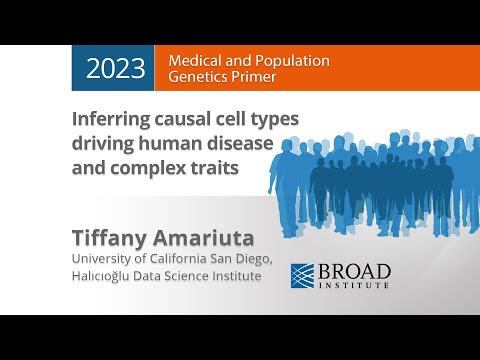Description:
Explore a comprehensive lecture on inferring causal cell types driving human disease and complex traits in this Medical and Population Genetics Primer. Delve into the integration of genome-wide association studies (GWAS) with functional genomics data to identify disease-associated cell types. Learn about colocalization of expression quantitative trait loci (eQTLs) with GWAS variants and its importance in implicating disease-critical genes and tissues. Discover the concept of transcriptome-wide association studies (TWAS) and their role in performing polygenic colocalization of genes with diseases. Examine the Tissue-Corrected Score Causal (TCSC) method, its power, calibration, and application to real gene expression and trait data. Gain insights into visualizing multivariate regression in TCSC and understand the importance of eQTL sample size in trait analyses. Explore how TCSC identifies causal tissue-trait pairs and performs under violated model assumptions. Learn how to get started with TCSC and access relevant data through the TCSC Repository.
Read more

Inferring Causal Cell Types Driving Human Disease and Complex Traits - MPG Primer 2023
Add to list
#Mathematics
#Statistics & Probability
#Causal Inference
#Science
#Biology
#Genetics
#Population Genetics